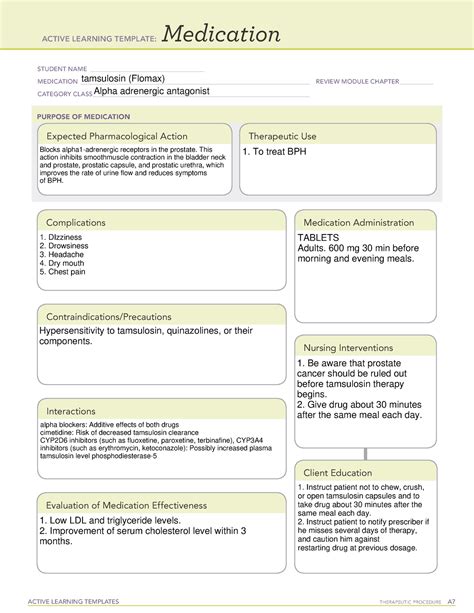Intro
Learn about Flomax, a prescription drug for benign prostatic hyperplasia (BPH) treatment, including dosage, side effects, and interactions, to manage urinary symptoms effectively.
The importance of understanding prescription drug information cannot be overstated, especially when it comes to medications like Flomax. This drug is widely used to treat benign prostatic hyperplasia (BPH), a condition that affects millions of men worldwide. As the population ages, the prevalence of BPH is expected to increase, making it crucial for patients and healthcare providers to be well-informed about the benefits and risks associated with Flomax. In this article, we will delve into the world of Flomax, exploring its uses, side effects, and interactions, as well as providing valuable insights into how to get the most out of this medication.
Benign prostatic hyperplasia is a non-cancerous enlargement of the prostate gland that can cause a range of symptoms, including difficulty starting to urinate, weak urine flow, frequent urination, and nocturia (waking up multiple times during the night to urinate). If left untreated, BPH can lead to more serious complications, such as urinary tract infections, bladder stones, and kidney damage. Flomax, also known as tamsulosin, is an alpha-blocker that works by relaxing the muscles in the prostate and bladder neck, making it easier to urinate. By understanding how Flomax works and its potential side effects, patients can make informed decisions about their treatment options.
The diagnosis of BPH typically involves a combination of physical exams, medical history, and diagnostic tests, such as a digital rectal exam (DRE), prostate-specific antigen (PSA) test, and urinalysis. Once diagnosed, patients can work with their healthcare providers to develop a treatment plan that may include lifestyle modifications, medications like Flomax, and in some cases, surgery. It is essential for patients to be proactive in their care, asking questions and seeking guidance on how to manage their symptoms and minimize the risk of complications. With the right treatment and support, men with BPH can lead active and healthy lives, free from the burdens of this condition.
What is Flomax?

How Does Flomax Work?
Flomax works by blocking the action of alpha-1 adrenergic receptors in the smooth muscle of the prostate and bladder neck. These receptors are responsible for causing the muscles to contract, which can lead to the symptoms of BPH. By blocking these receptors, Flomax helps to relax the muscles, making it easier to urinate and reducing the symptoms of BPH. The effects of Flomax can be seen within a few days of starting treatment, but it may take several weeks to experience the full benefits of the medication.Benefits of Flomax

Common Side Effects of Flomax
While Flomax is generally well-tolerated, there are some common side effects that patients should be aware of. These include: * Dizziness or lightheadedness: Flomax can cause a sudden drop in blood pressure, leading to dizziness or lightheadedness. * Headache: Some patients may experience headaches while taking Flomax. * Nausea or vomiting: Flomax can cause stomach upset, including nausea or vomiting. * Weakness or fatigue: Some patients may feel weak or tired while taking Flomax.Interactions with Other Medications

Precautions and Warnings
Flomax is not suitable for everyone, and there are certain precautions and warnings that patients should be aware of. These include: * Hypotension: Flomax can cause a sudden drop in blood pressure, leading to dizziness or lightheadedness. * Cataract surgery: Flomax can increase the risk of complications during cataract surgery. * Prostate cancer: Flomax is not a treatment for prostate cancer, and patients with this condition should not take the medication.Dosage and Administration

Missed Dose
If a patient misses a dose of Flomax, they should take it as soon as possible. However, if it is almost time for the next dose, the patient should skip the missed dose and continue with their regular dosing schedule. Patients should not take a double dose of Flomax to make up for a missed dose, as this can increase the risk of side effects.Patient Education

Monitoring and Follow-Up
Patients taking Flomax should be monitored regularly to assess the effectiveness of the medication and to check for any potential side effects. Patients should also be encouraged to follow up with their healthcare provider if they experience any changes in their symptoms or if they have any concerns.Conclusion and Next Steps

What is the most common side effect of Flomax?
+The most common side effect of Flomax is dizziness or lightheadedness, which can occur in up to 10% of patients.
Can Flomax be taken with other medications?
+Flomax can interact with other medications, including blood pressure medications and erectile dysfunction medications. Patients should consult with their healthcare provider before taking any new medications.
How long does it take for Flomax to start working?
+The effects of Flomax can be seen within a few days of starting treatment, but it may take several weeks to experience the full benefits of the medication.
